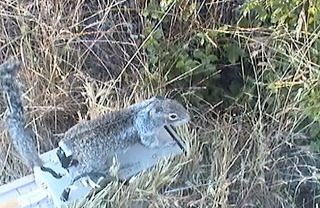 At the University of California, Davis robots are being used to study the reaction of squirrels and rattlesnakes, the display behavior by anole lizards in the jungles and ecology, the mating behavior of sage grouse, according to a press release from the university.
At the University of California, Davis robots are being used to study the reaction of squirrels and rattlesnakes, the display behavior by anole lizards in the jungles and ecology, the mating behavior of sage grouse, according to a press release from the university.
In the case of the squirrels, the researcher was curious whether the heating of the squirrel’s tail during an encounter with a rattlesnake played a role in the interaction. In real squirrels, the heating can’t be separated from the tail waving, so a robot squirrel was used.
An earlier study found that the snakes did respond to the heat in the squirrel’s tail, but the paper was published in a robotics journal.
Find out more about using robots to study wildlife behavior in the University of California, Davis press release.
There was also a short item from CNN.
The robosquirrel in action, screen shot, videography by Rulon Clark Lab/San Diego State University
